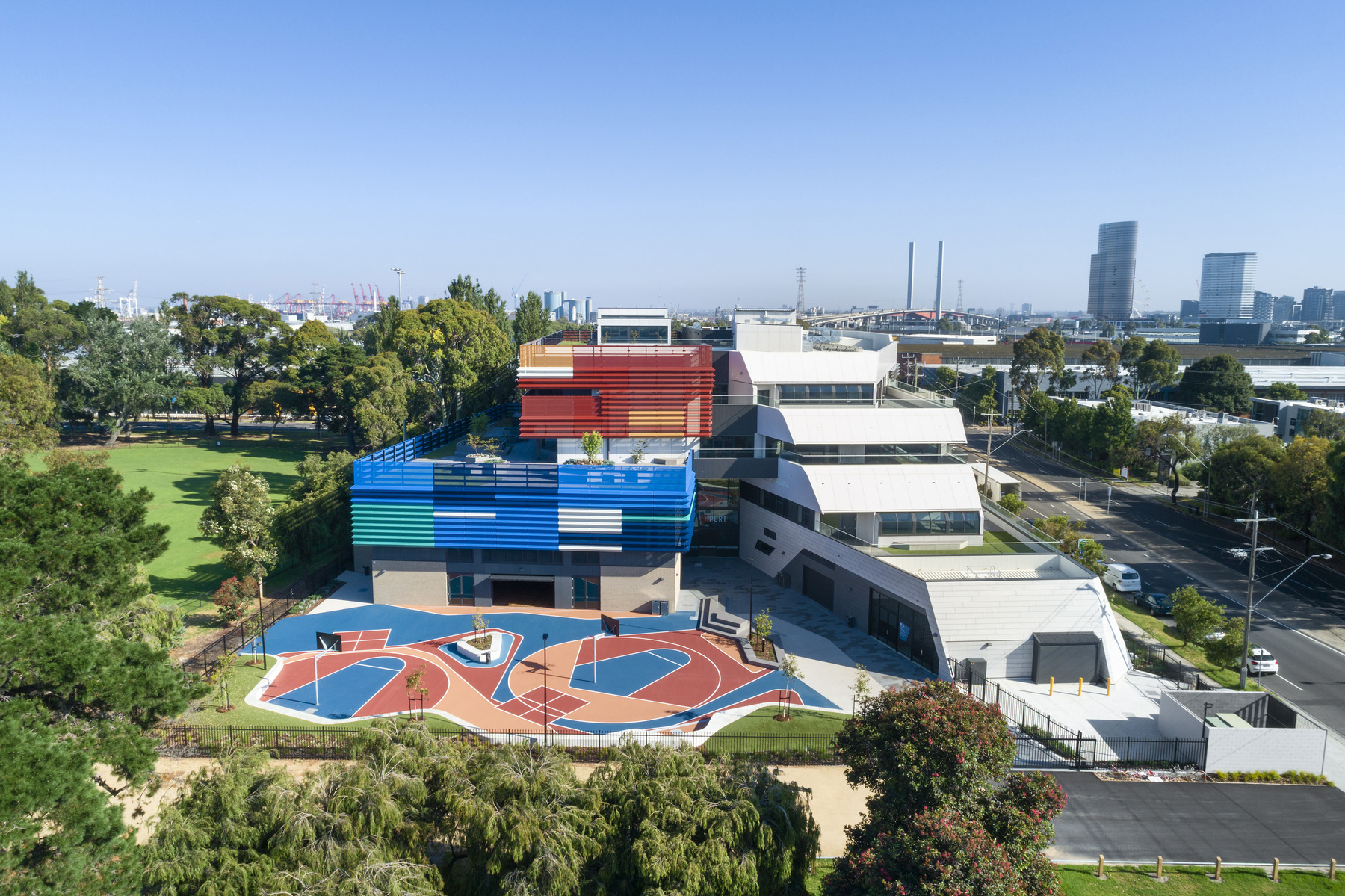What do you love about your school? What needs improvement? And where are your favourite places to teach, learn, chill-out or be noisy? These are just some of the questions being asked of the Port Melbourne Secondary College (PORT) community, including select teaching staff and students, in a new six-year student-led, adult supported research program by Billard Leece Partnership (BLP).
Students are at the centre of the project, titled ‘7&Up’, who will be involved in the school’s first-ever Year 7 group via interactive workshops beginning this year. Loosely mirroring the documentary Seven Up (1964), a British series that followed the lives of 20 children from the age of seven, BLP will connect with the same student group as they progress through their six years of high school until they reach Year 12 in 2027.
Located in the growing Victorian community of Fishermans Bend, about 1km south of Melbourne’s CBD, PORT is a multi-storey vertical school – a typology suited to education in increasingly dense inner city environments. The aim of the research project, in collaboration with the school’s principal, Anne Stout, is to track and compare how the students feel and interact with the building and how these might develop over time as their learning needs change.
“We designed the school to accommodate a foundation Year 7 intake, ensuring that the school had the capability and capacity to grow year-on-year until that first cohort completes their learning journey at the end of Year 12,” explains Emily Gilfillan, BLP Principal & Learning Spaces + Communities Lead. “By checking in with the same group of students over their time spent at PORT, and understanding the school through their experiences, we can learn what we are doing well and what adjustments can be made in the future to ensure time spent at school is equally educational and enjoyable.”
An unusual factor with the PORT school, and a core influence in conceiving the research project, was its connection with the local community. Noting that it is generally typical for a community to be in place prior to a school’s construction, Gilfillan points out PORT was designed and delivered ahead of the neighbourhood existing around it. “As the region grows over the next six years, the community’s involvement in the research project will be invaluable,” she says. “We want their input on the practical performance of the school, we want to hear how it’s perceived in the broader area.”
Recognising that design is an ever-evolving process, the data collected from students, staff, and the school community at-large will assist BLP, collaborators and government partners evaluate the performance of the built environment at Port Melbourne, identify areas for improvement, and ultimately shape the schools of the tomorrow. It’s part of a detailed process that BLP calls Translational Design – transforming research into tangible results – in action.
“Our research will help identify whether our design at PORT suits the developing learning preferences of the current educators and student cohort,” says Ariel Lopez, BLP Principal & Project Director, highlighting the expectation that the early ways students learn to “inhabit” the building are unlikely to be the same as how they use the school in later years. “We’re poised to learn a lot from this research and look forward to establishing a genuine connection with students, teachers and the wider PORT community.”


